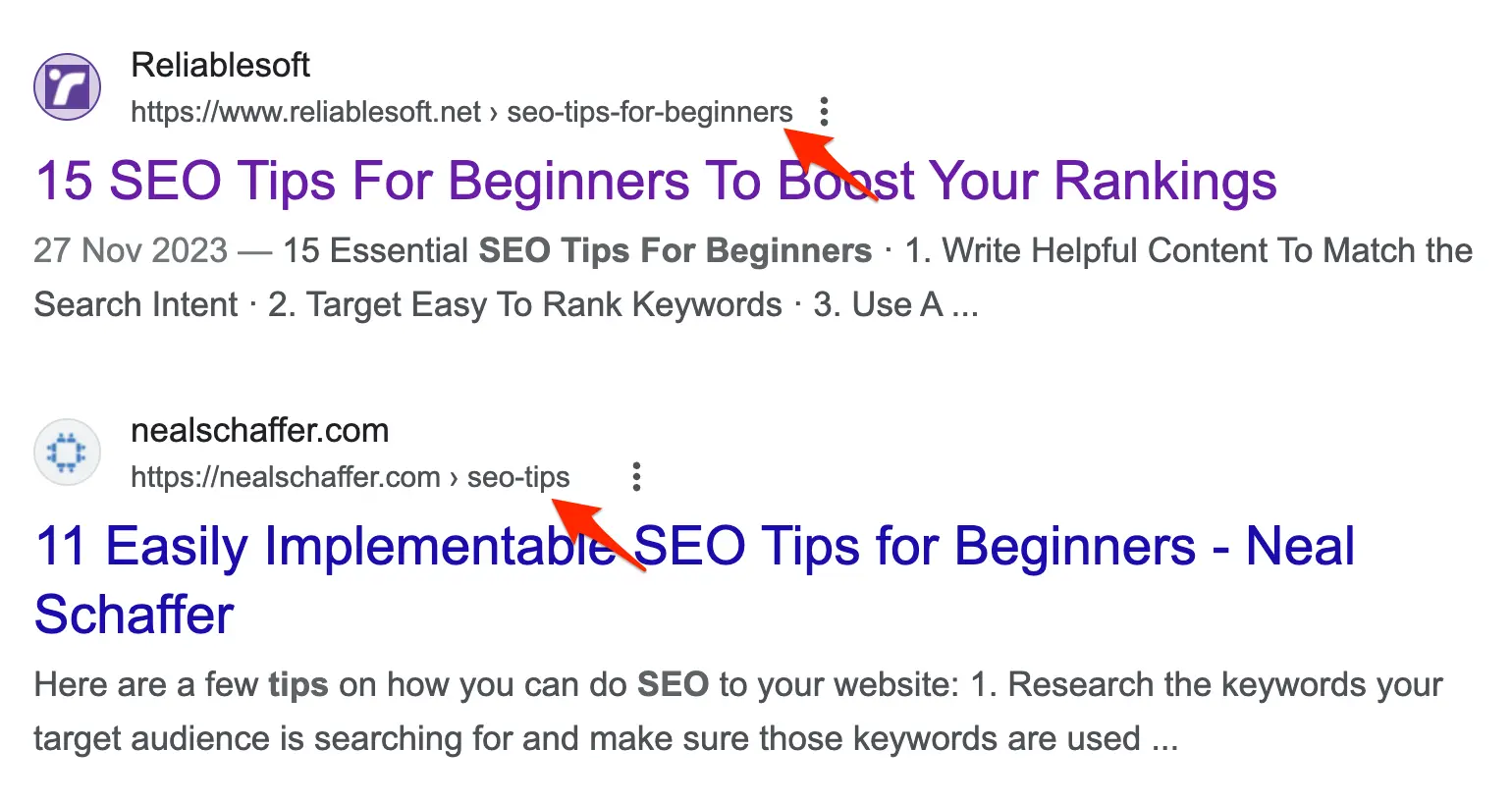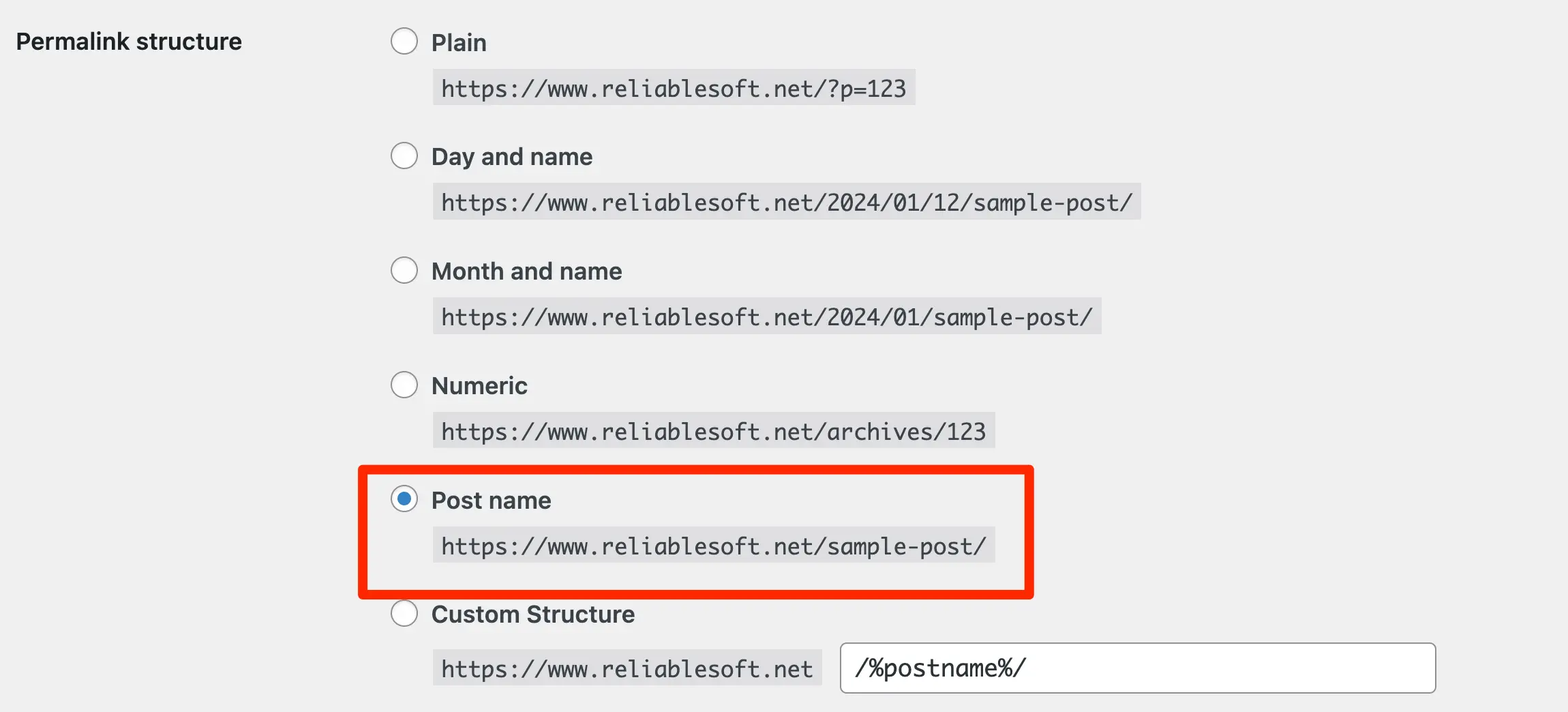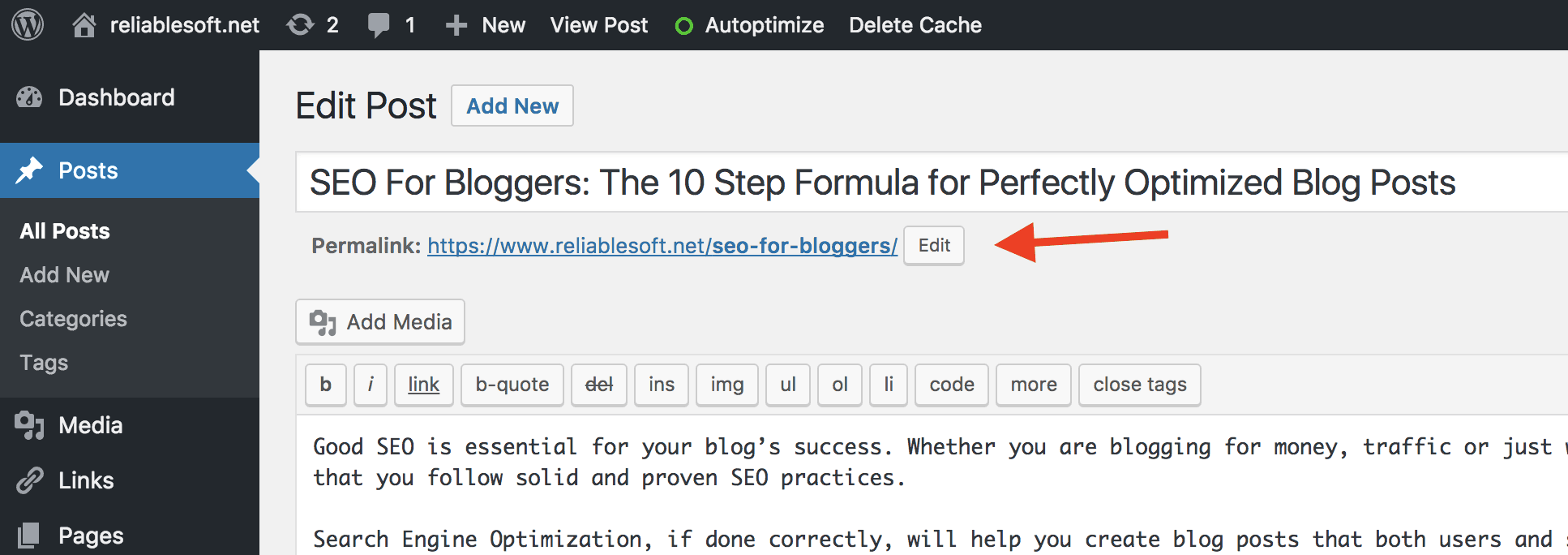What Is An SEO-Friendly URL?
An SEO-friendly URL is a URL that is designed to be easy to read by users and help search engines understand what a web page is about. It includes keywords and is short and concise.
This is an example of an SEO-friendly URL:
https://www.reliablesoft.net/seo-friendly-url
URLs are shown on the browser address bar:

And may also be shown in Google search result snippets.

Why Do URLs Matter For SEO?
URLs are important for SEO for four main reasons:
SEO-Friendly URLs improve the user experience – A user can tell by reading this URL https://www.reliablesoft.net/seo-audit/ that the destination page has information related to an SEO Audit.
Higher-CTR – The URL might be shown in the search results, and well-crafted URLs are more informative and attractive to users, meaning higher organic CTR.
It’s an SEO ranking factor – Although it’s a minor SEO factor, several SEO ranking studies show that most pages in the first positions of Google have optimized URLs.
Can be used as anchor text – As stated by Google, some users might link to your page using the URL of the page as the anchor text, so if your URL contains relevant keywords, this provides search engines with more information about the page.
Best Practices For Creating SEO-Friendly URLs
Follow these steps to optimize your URLs for SEO.
- Use Your Primary Keyword
- Use Hyphens As Word Separators
- Make Them Short And Descriptive
- Use Lowercase Letters
- Don’t Use Spaces
- Don’t Use Dates
- Make Use of HTTPS
- Use Simple URL Structure
1. Use Your Primary Keyword
You should use your target keyword in the URL because it gives users and search engines more information about a page.
Google guidelines state using words relevant to your site’s content and structure.

For example, look at the URL of this post: https://www.reliablesoft.net/seo-friendly-url. It describes exactly what the page is about by separating my target keyword (SEO-Friendly URL) by hyphens.
If you compare the post’s title: How To Create SEO-Friendly URLS? (+Examples) with the URL, you will notice that certain words like ‘how’ and ‘to’ have been removed from the URL.
For even better results, use your keywords at the beginning of the URL rather than in the middle or the end.
Caution should be taken to avoid keyword stuffing in the URL. Don’t repeat the same keyword more than once.
For example, DON’T do this:
https://www.reliablesoft.net/services/seo-packages/seo-packages.php
Instead, use keywords wisely without repetition. Here is a better version:
https://www.reliablesoft.net/seo-packages
2. Use Hyphens As Word Separators
Always use hyphens to separate the words that make up a URL. This is the default setting for most CMSs. If this is not the case with your website, it should be changed to a more friendly format.
3. Make Them Short And Descriptive
Although the character limit for URLs is up to 2048 characters, keeping the URLs as short as possible is recommended. Ideally, aim for a URL length that captures the essence of the page’s content without unnecessary fluff.
For example, if your webpage is about ‘SEO tips’, a URL like ‘example.com/seo-tips’ is far more effective than a lengthy URL filled with irrelevant terms or numbers.
Any parameters or characters that don’t make sense for users and search engines should be avoided.
Short URLs are easy to remember and more readable. They can be easily shared in emails and social media and verbally in conversations or presentations. This can enhance the likelihood of your page being correctly remembered and revisited.
4. Use Lowercase Letters
Characters in a URL should be lowercase.
Most CMS will allow uppercase letters in a URL, i.e., www.example/MY-Url, but remember that this differs from www.example.com/my-url.
Google and other search engines will interpret these as two different pages.
Ensure all URLs are lowercase to avoid duplicate content issues or 404 errors.
5. Don’t Use Spaces
Sometimes, your CMS automatically creates URLs from filenames, especially for uploaded images.
When there is a space in the filename, this will be translated as %20 in the URL.
For example, if you have an image with the name “SEO Friendly Websites.jpg” and your CMS is not properly configured to use hyphens ‘-‘as separators, this will be shown as “SEO%20Friendly%20Websites.jpg” and this is not user-friendly.
6. Don’t Use Dates
Dates should not be used as part of the URL since they don’t benefit the users or search engine crawlers.
Having dates in URLs can make them appear outdated, potentially discouraging users from clicking through, especially if the content is evergreen and continually relevant. Furthermore, URL dates can create issues if the content is updated, leading to a mismatch between the URL and the content’s current relevance.
For example, my SEO checklist post is updated yearly to include the latest SEO practices. The date is added to the title to make it more relevant to the content and attractive to users, but the URL slug is always “seo-checklist”.

Google uses other mechanisms to identify when a post was published, and having the date as part of the URL adds unnecessary complexity.
7. Make Use of HTTPS
Another factor contributing to a URL’s SEO friendliness is the website’s security, particularly using an SSL.
Having a website with an SSL installed servers 3 significant purposes:
- It makes your URLs HTTPS, an additional way to gain users’ trust.
- It makes your website more secure (any information submitted through your website is encrypted)
- It gives you a small ranking boost.
If your website is not using HTTPS yet, use this guide to migrate from HTTP.
8. Use Simple URL Structure
Ideally, limit the depth of your URL structure to a maximum of two levels. This approach makes your URLs more user-friendly but also aids search engines in understanding and indexing your site’s structure efficiently.
Let’s look at some examples to understand this better:
URL directly linked to the domain – This is the most straightforward URL structure, where the page is directly accessible from the main domain.
For example, https://www.example.com/about.
URL in a folder that is 1 level down – The URL is nested within a folder, which helps organize the content without adding unnecessary complexity.
An example would be https://www.example.com/blog/article-title.
URL in folders, 2 levels down: This structure involves two levels of directories while remaining clear and manageable.
For example, https://www.example.com/shop/men/shirts.
It’s generally best to avoid going beyond this two-level depth. Deeper URL structures can make navigation cumbersome and may dilute the SEO effectiveness of your site. Keeping URLs concise and straightforward helps maintain a clean, easily navigable, and SEO-friendly website.
How To Set URL Structure
Configuring your URLs in WordPress is very easy. WordPress is an SEO-friendly platform, and all you have to do is go to SETTINGS -> PERMALINK SETTINGS and choose one of the common settings or write your custom structure.
By choosing the Post name setting, your URLs will be directly linked to your domain without any folders or intermediates.

WordPress will try to create the URL based on the page’s title when publishing a post or a page.
To optimize your URL, click the EDIT button below the post title, configure your URL, and then click the SAVE DRAFT or UPDATE buttons.

How To Handle URL Changes
When changing your URLs, it is sometimes necessary to add 301 redirects to let Google know that you are changing the address of a page.
301 redirects will help you maintain your SEO rankings and improve the user experience since any URLs bookmarked by users will still work.
To check if you need to add a redirect, open a new browser window and type the OLD URL in the address bar. If everything is okay, it should redirect to the new URL.
If it still shows a 404 error, you must add a 301 redirect. Read this post to learn how to redirect URLs correctly.
Learn More About Technical SEO
- Technical SEO Best Practices
- Best Technical SEO Courses
- The Complete SEO Course








